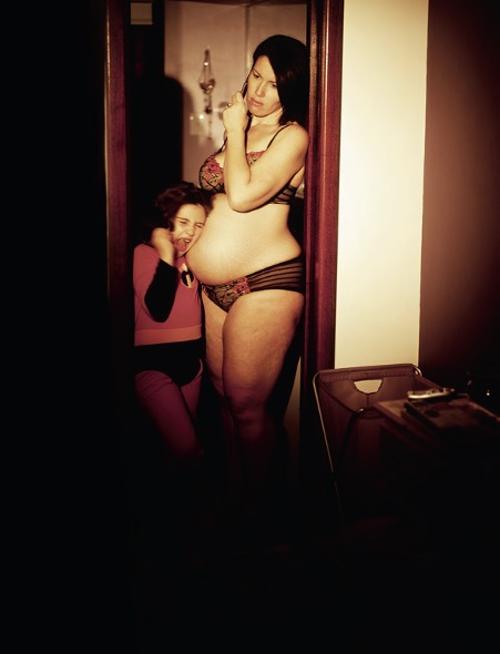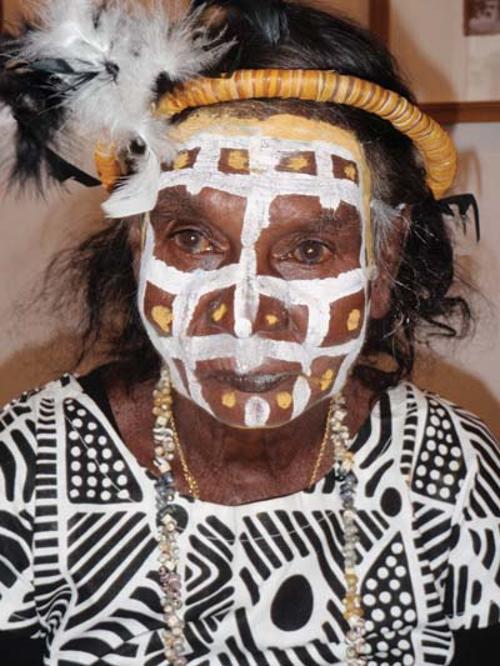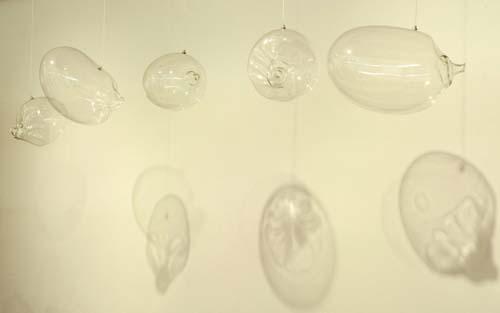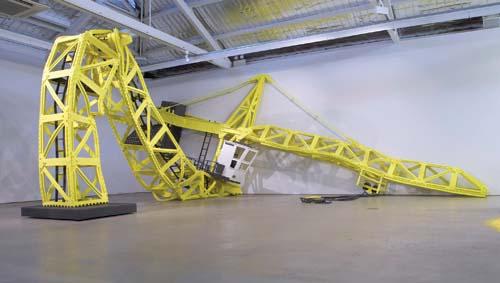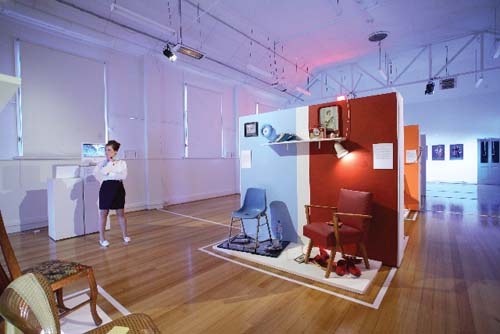
In Tasmania, when you drive from Hobart to Moonah, you are said to be venturing beyond The Flannelette Curtain. This may well be tongue-in-cheek, but the history of class division based around suburbs and regions it alludes to is no joke - there's a cultural divide, a Them And Us, that is prevalent in this state. This is what the Stigma Research Laboratory sought to interrogate; it was one of those moments when artists are asked to turn their hand to a specific social commentary. And it was pleasing to see all the artists whose work inhabited the Moonah Arts Centre, itself well beyond the imaginary Flannel demarcation line, tackling this challenge with originality.
For Jon Vella’s 'FIT (7_ _ _)', video footage of suburbs in and around the Hobart and Moonah areas was gathered, then Vella, his partner and their two children dressed up as generic versions of the people they saw. This spoke volumes about the perception clothing creates as you were lured into guessing which version of Family Vella lived in which area and it was just subtle enough for a little twinge of guilt to emerge when you realised that you had been conned into assumptions. The work drew the viewer in quite directly; the invoked participatory involvement becoming its focal point once you got past the almost comedic first layer. Yes, the contrasts in dress were funny, but why, and who was being laughed at?
Vella’s other work 'SRV – the Status Free Vehicle' described an imaginary vehicle where in uniform garb passengers could only look up to the heavens, whilst being taken on a drive around the suburbs. All they would be able to see would be the same sky everyone lives under, thus bringing focus to the things all people have in common. Still laced with comedy, there was bit more joy in this work, making it the more successful of the two, but it was the tandem effect that spoke most strongly – Vella showed us the problem and then suggested a way out, and noted that having fun might be vital.
'Make Yourself at Home' by Pip Steele was intensive, featuring a performance, complex colour-coded installations and a personality test that blended postcodes with homing pigeons. You had to take part to gain the full effect of the piece – you filled in a small questionnaire then received a coloured wristband, which corresponded to one of the rooms that Steele had constructed, each colour co-ordinated to a high degree. Further coding was provided by the assignation of a species of homing pigeon to each space. You got a colour, a bird and an interpretation of what sort of homemaker you are, what you think a home is in a parody of horoscopes. In keeping with the theme, your suburb was part of deciding this, but it was slipped in discreetly and seemed to be overlooked as people identified strongly with their assigned descriptions. As a performance Steele got people to agree to their own stigmatisation via artificial category, whilst dressed as a kind of air hostess from 1966 with an elaborate beehive. The work became a witty discussion of how preconception is constructed and pointedly asked how much the victim might be complicit. The complexity of the issue opened up, but a sense of fun was never lost.
Scot Cotterell took a different look at the idea of stigma, going for a focused investigation into the practice of tattooing. Tattooing does have class implications but these are always in flux, and the issue of tastes and trends in tattooing was invoked as well as the idea of environment. Relics of a particular kitsch mode decorated his mocked up tattoo parlour; while a video of someone demonstrating how to tattoo was projected. Initially funny, the point was made about the choices of decoration of a room or a body; the literal marking denoting personal choices about history, belonging and identity. Serious fun, as with the rest of SRL, and this is what made the show work for me – a sense of play tempered by precise irony. It must not be laid on too thick, but not be dumbed down either and that’s the balancing act of such work. To negotiate something as complex as stigma, the important consideration is to discover where it exists within oneself, then to wonder how it is created and what might be done. The SRL works didn’t set out to provide a solution, rather they gently but firmly pointed to complexity and complicity.

